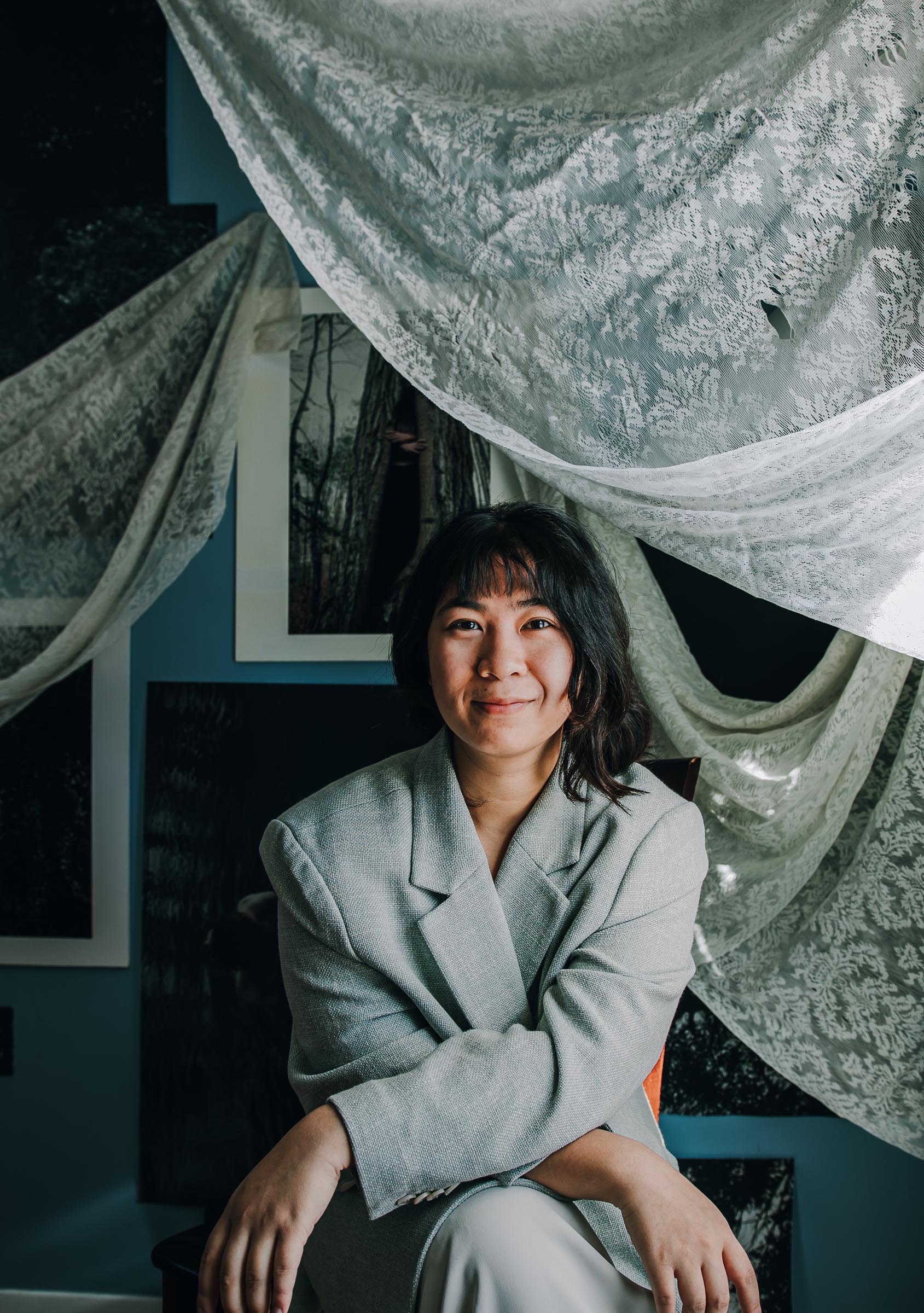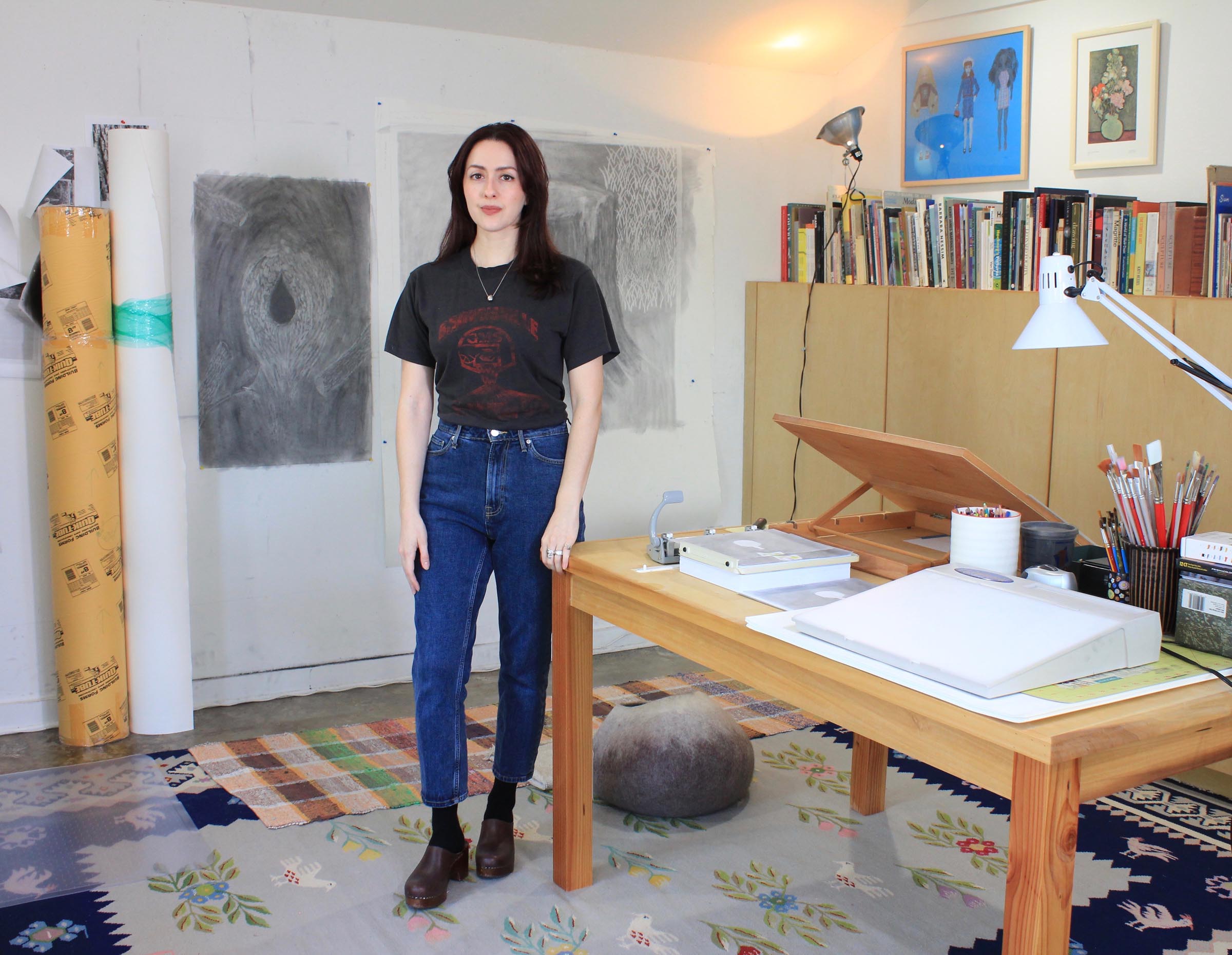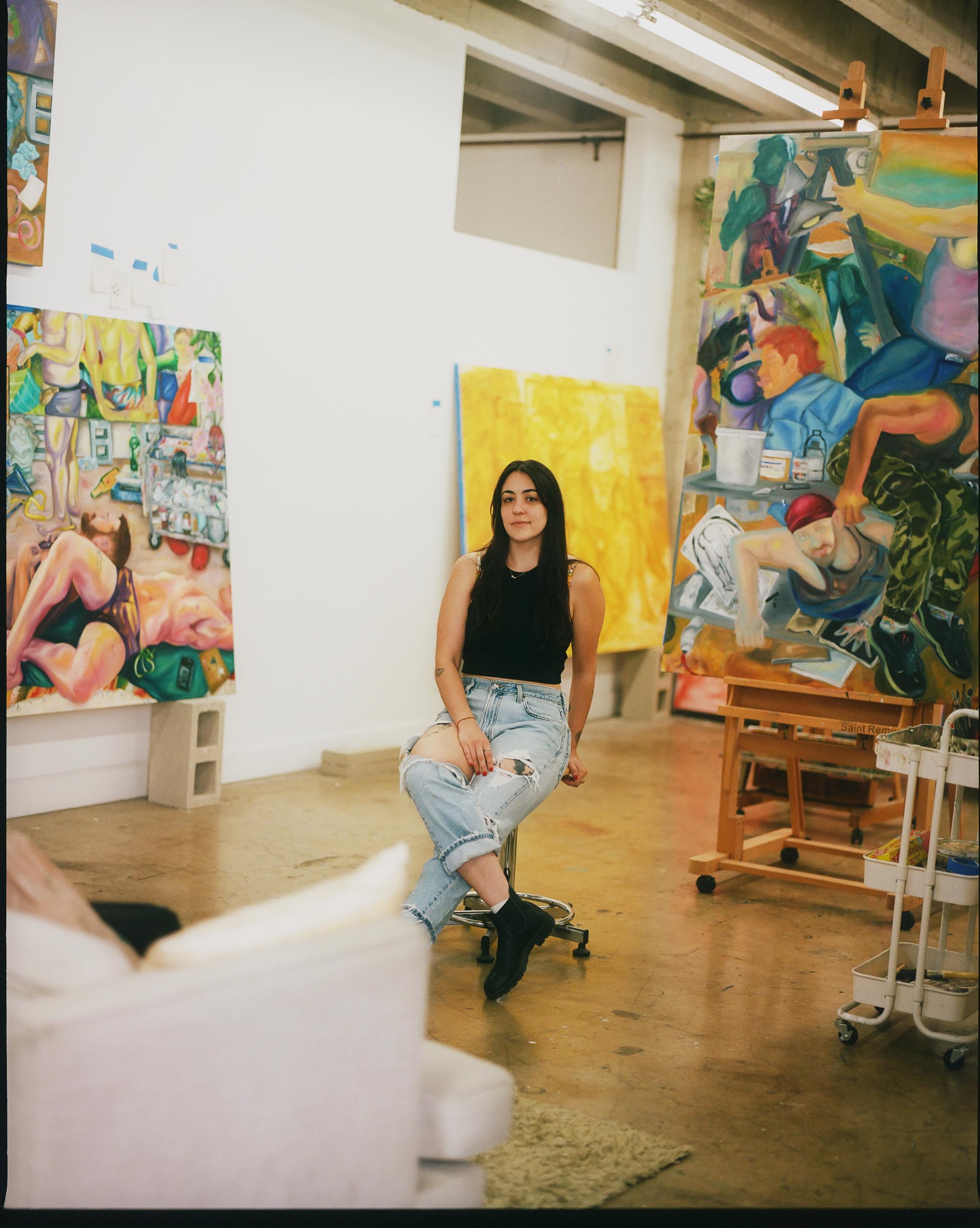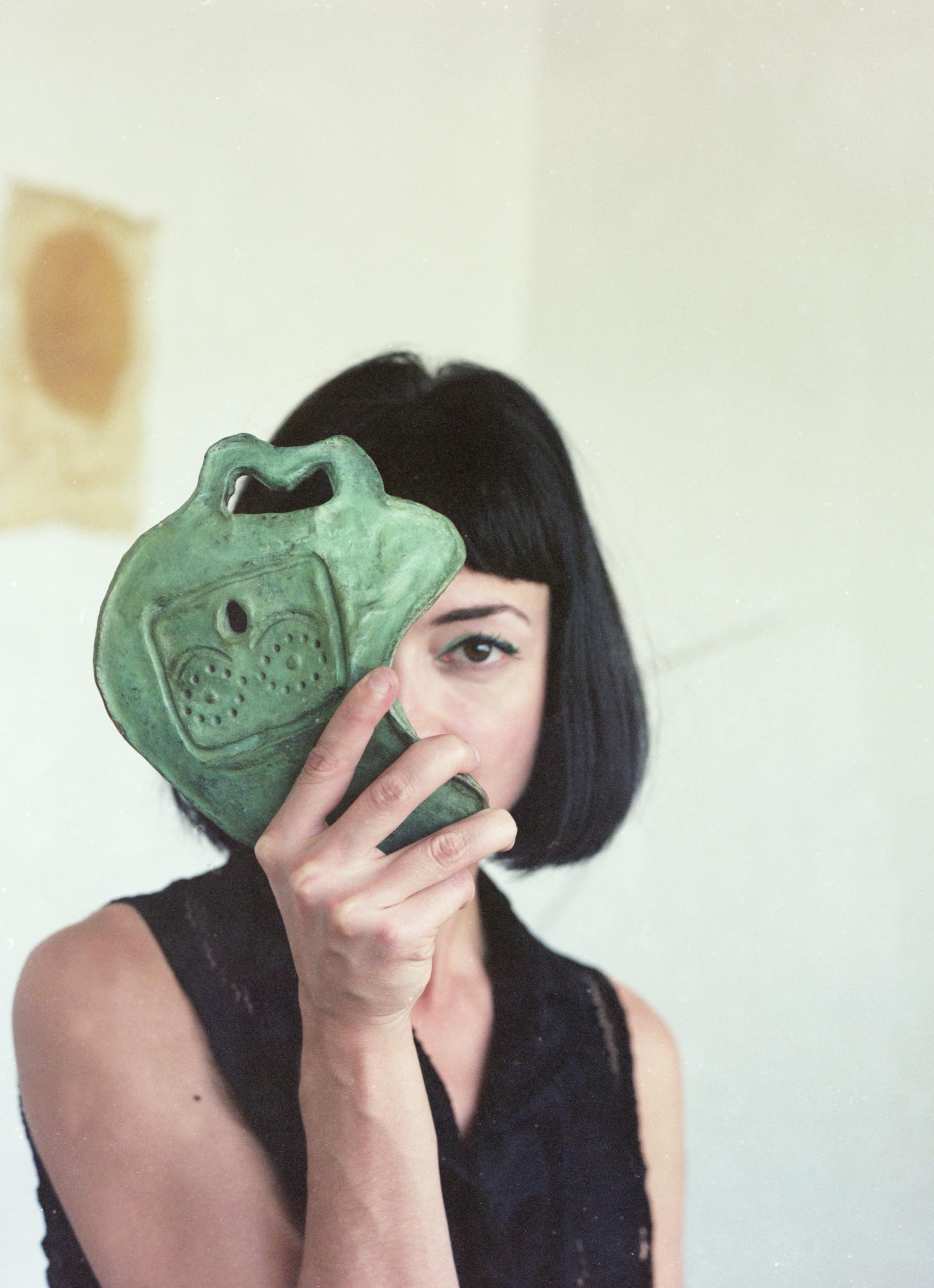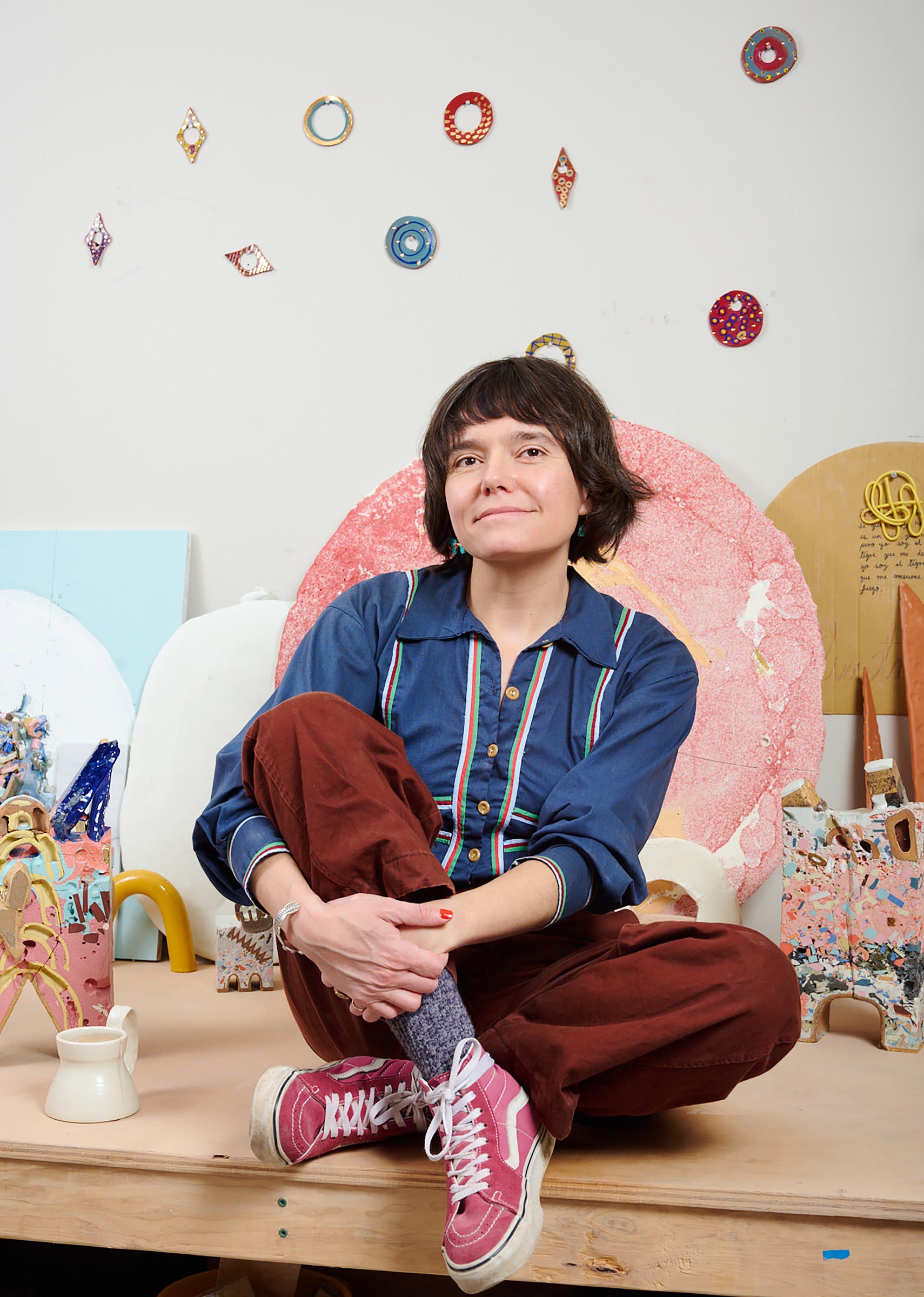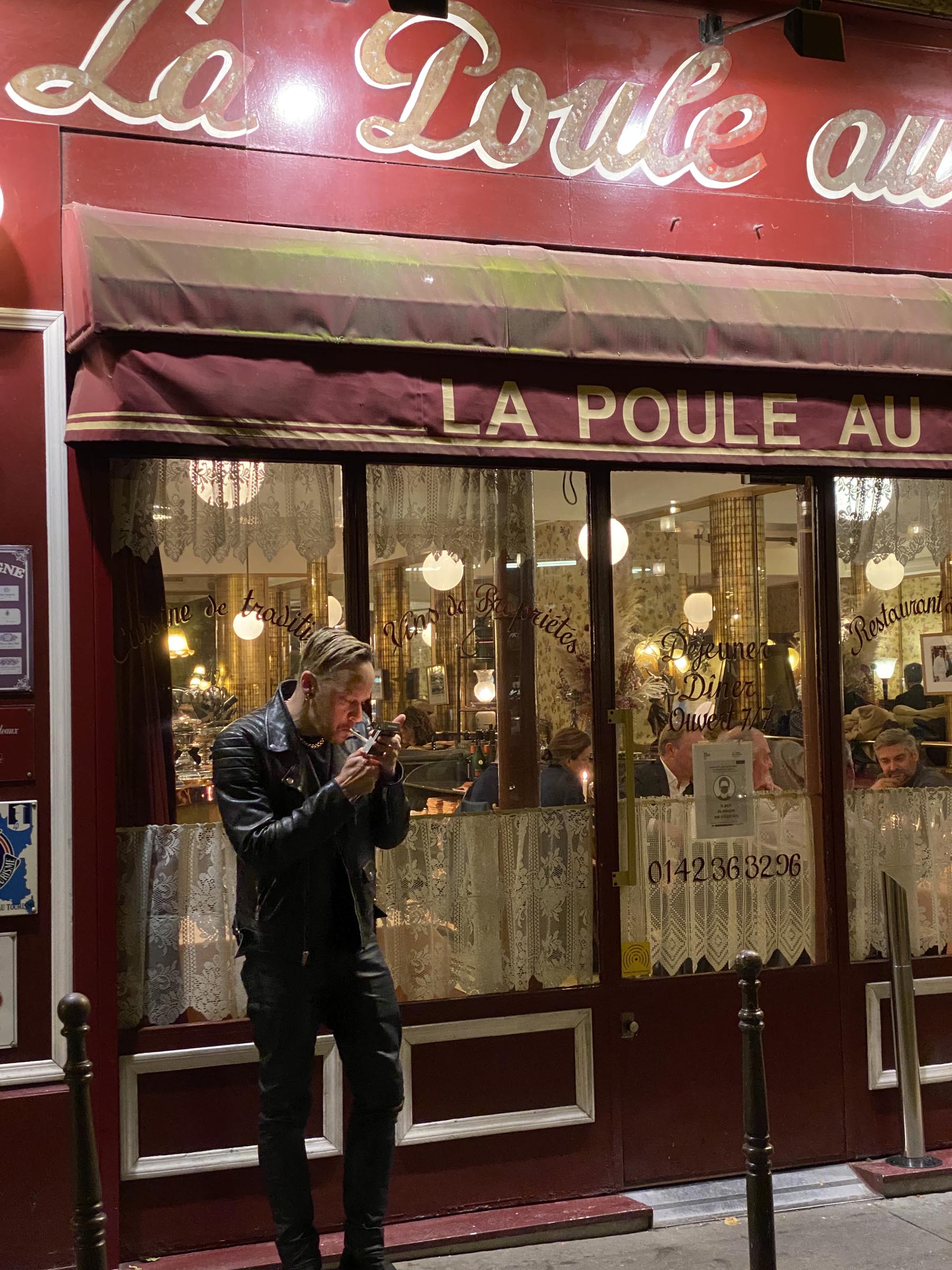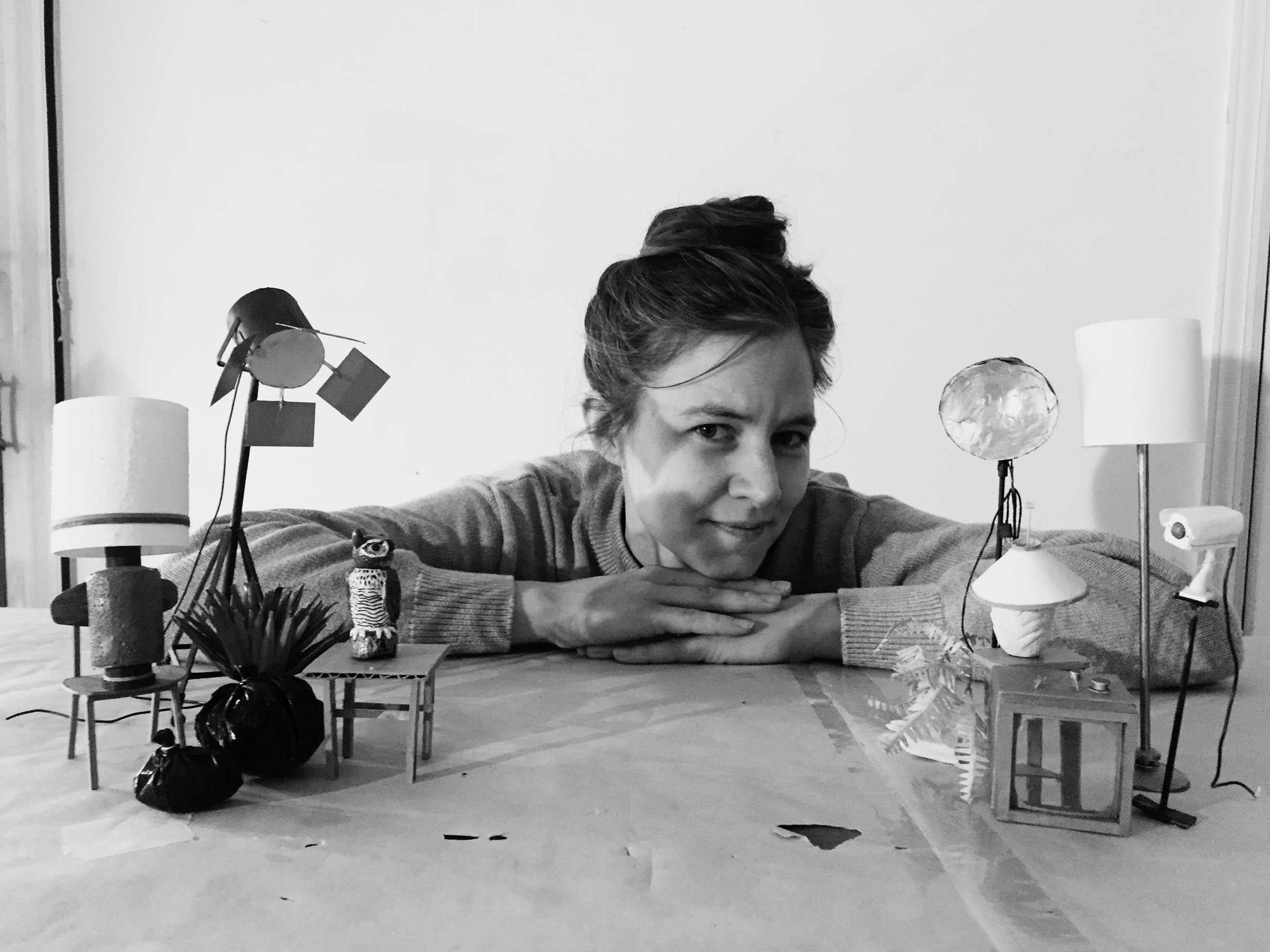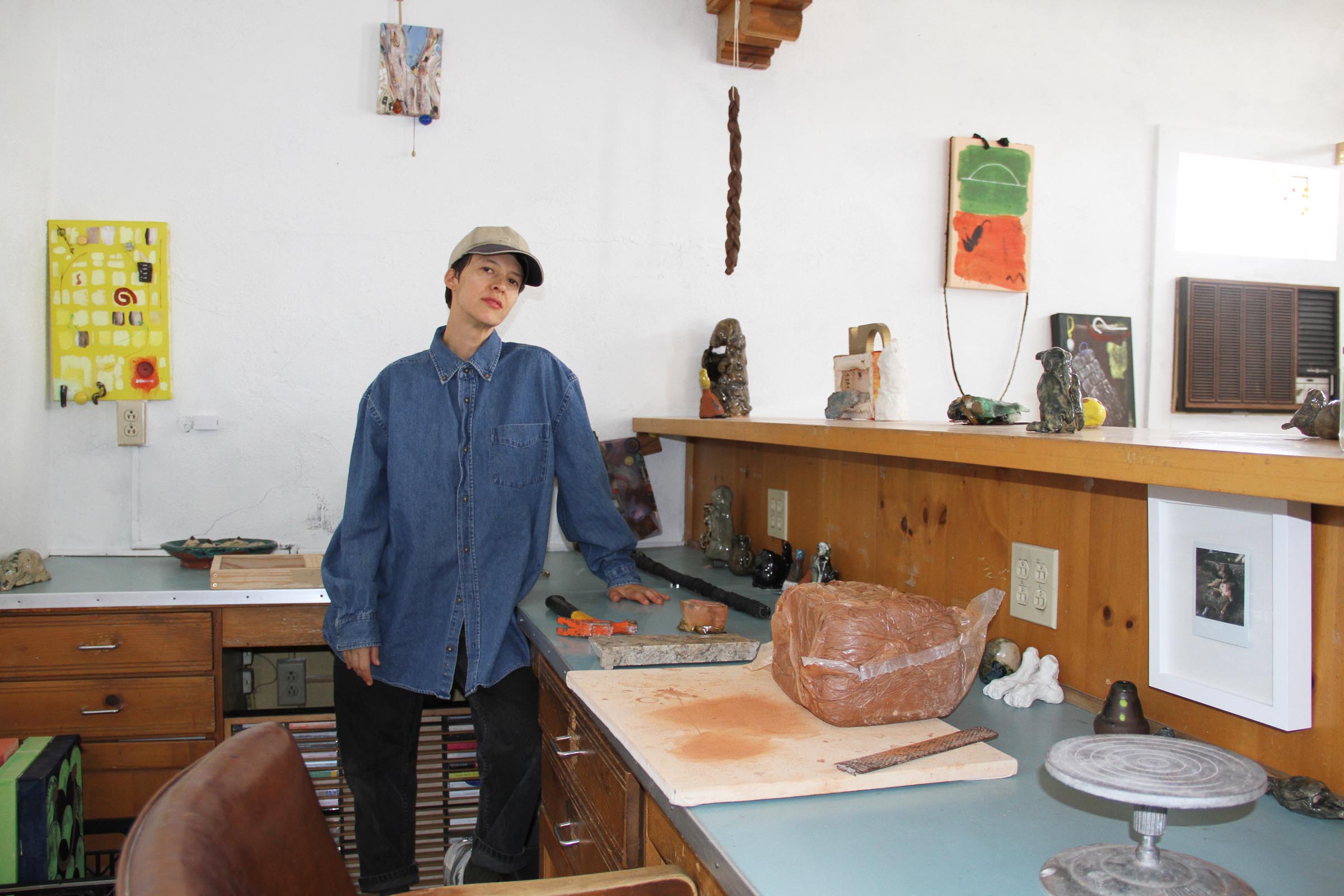How did you get into making art?
From an early age I’ve been a prolific drawer, and as a kid my chest of drawers was used more for drawing storage than for clothing. I had a somewhat unconventional childhood, growing up in the Byron Bay area of Australia (a hippy hotspot for those not in the know) and going to a Steiner School. Steiner education focuses heavily on creativity and holistic learning, and I relished the morning watercolour painting sessions, the felt-making workshops, and the pottery classes. Being an only child without many neighbours meant I also spent a lot of time on my own. This was usually spent drawing, playing the piano, or climbing the mulberry tree and thinking up exciting stories filled with imaginary horse and dog friends. My grandmother was an artist, as is my aunt, and I was lucky to have parents who encouraged me to follow my dreams and who helped to foster the idea that I should do what I want to do. After a gap year spent travelling through Europe and discovering whole new worlds of art and culture that blew my mind as a small country girl, I moved to Melbourne to study Fine Art and have been chasing my creative dreams ever since.
Louise Tate
Tate discusses the impact of a deep exposure to art at an early stage, chasing creative dreams, managing multiple upcoming exhibitions & the influence of the bushfire crises on her creative output
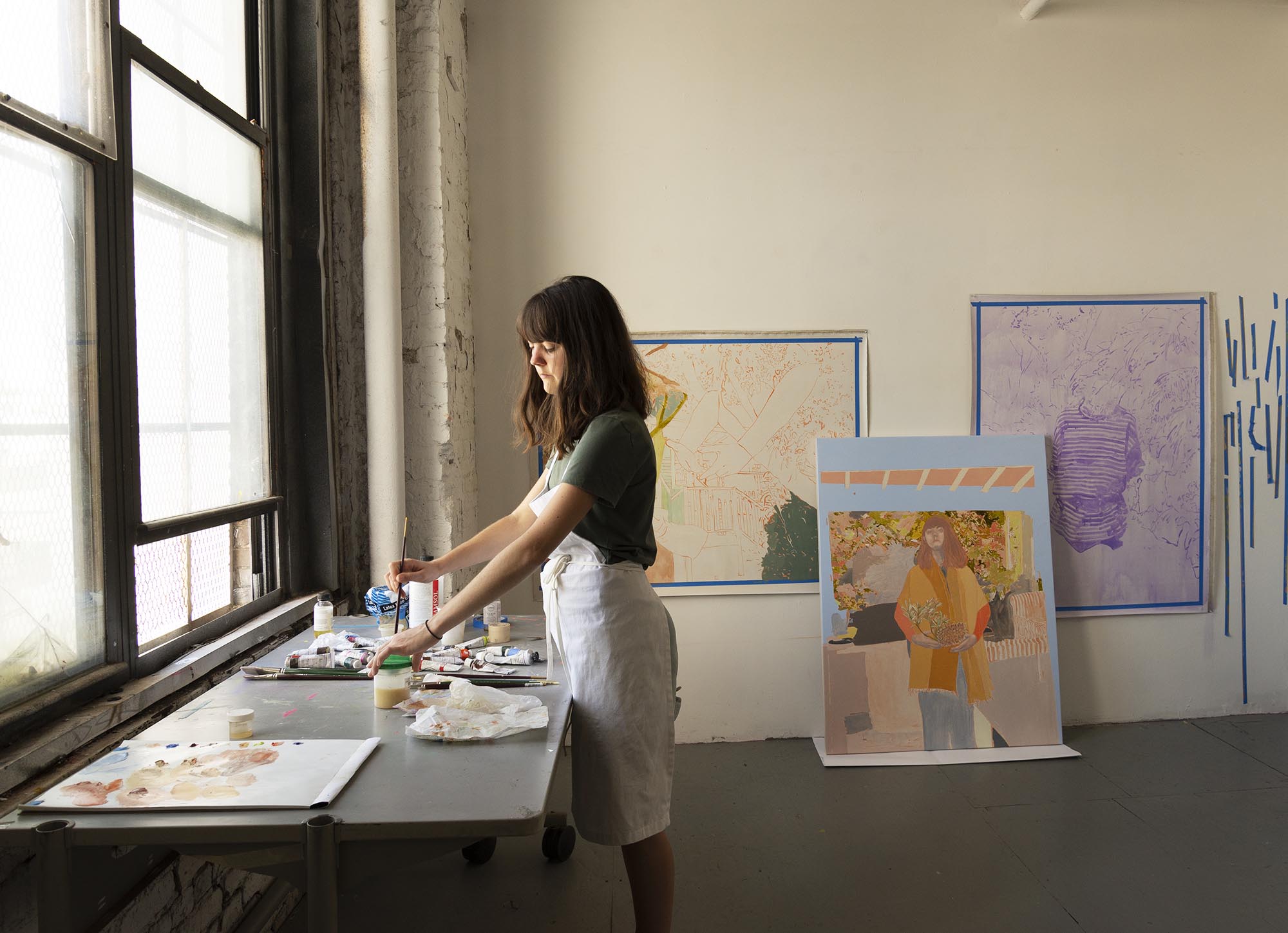
Louise Tate in her studio

What are you currently working on?
I have just finished the final touches on two bodies of work that I’ll soon be exhibiting in Australia. One is for an exhibition with Jan Murphy Gallery in Brisbane, QLD, called ‘In the midst of disappearing,’ which imagines stories of women in disappearing lands. Much like the fictional worlds created by Margaret Atwood, these are fictional lands in which the bodily rights of women are quickly dwindling and weather patterns are continuing to degrade (fictional lands not so far from reality). The bodies in these works become transient and begin to dissolve into luminous Australian native flora and fauna. Many of these paintings were made during a residency in Brooklyn, NY, at the NARS Foundation, and the incredibly urban environment I was working in caused me to return to the Australian landscape in my paintings as a source of respite. This is not to say that I didn’t enjoy my time in NYC, because I absolutely adored the intensity and vibrancy of the city and it was such a dream to spend three whole months there. The second body of work will be exhibited at Boom Gallery in Geelong, VIC, for a show called ‘Getting warmer.’ This series features bodies, hands, and bodiless clothing floating amidst lush rainforest, dry bushland, and pink-hued skies. As a warming climate causes real-world devastation, these works imagine new biospheres in which nature reclaims the land.

What inspired you to get started on this body of work?
After a devastating bushfire season in Australia during which skies turned pink, orange, red and sometimes black from smoke, I began to imagine what a world in which we no longer exist would look like. This led to a whole series of work featuring disembodied clothing that seemingly floated amidst an unpopulated Australian landscape. And yet the natural landscape is not disappearing in these works but thriving, reclaiming space once overrun with man-made infrastructure. World events these past couple of months have had me really wondering what a future will look like for us. I can’t say I’m feeling positive about it, but I do like to think of these works as both bleak and uplifting.
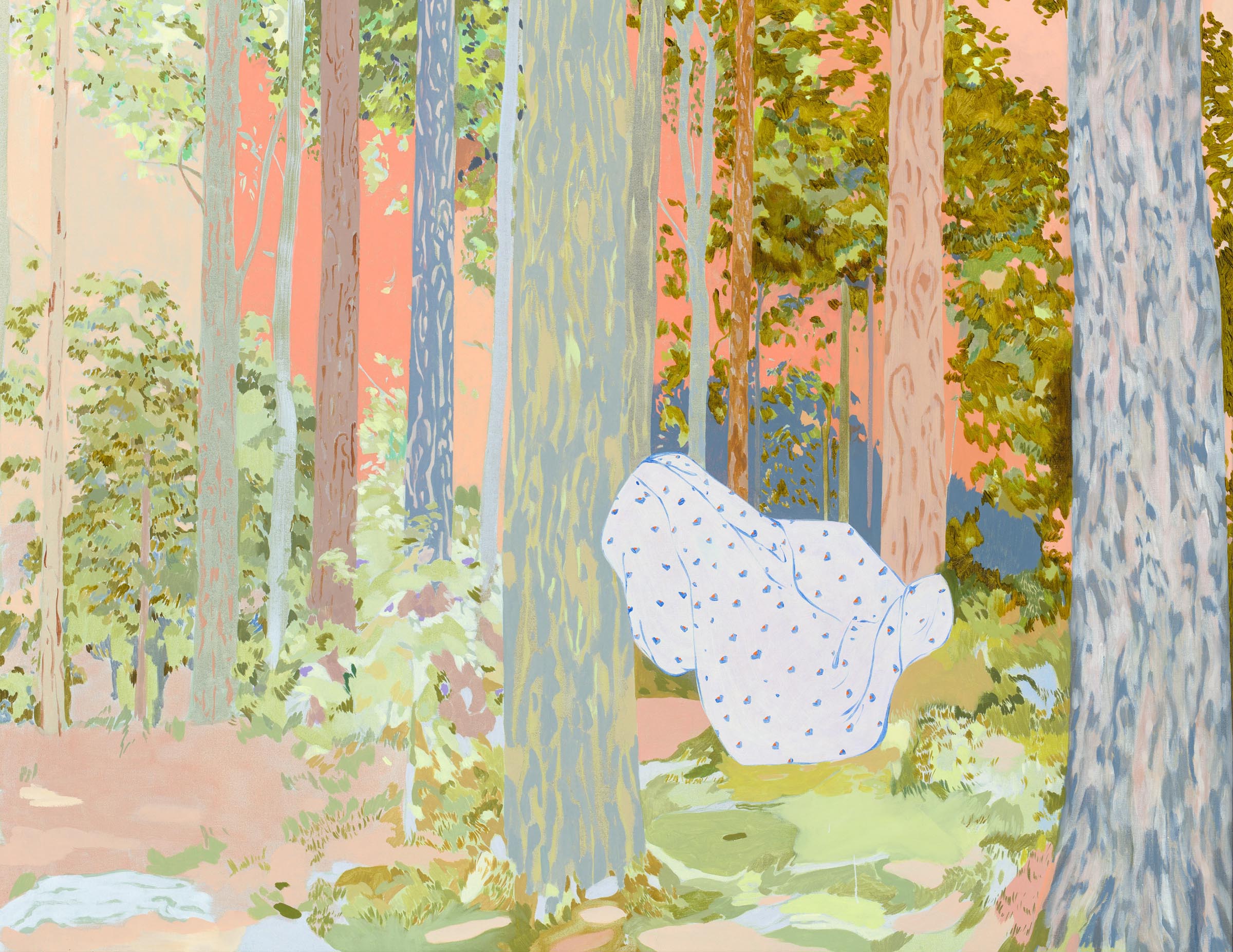
Do you work on distinct projects or do you take a broader approach to your practice?
As I was working on these two shows concurrently, many of the ideas and imagery for each show have overlapped and it feels really natural to work this way. Knowledge is cumulative, so I feel that each new work brings both new and old ideas together. Painting is such a fluid process and I try not to limit myself as much as possible. For me painting is also a space for escape, solace and imagination, and I think that no matter what project I work on my work will always reflect that.

Louise Tate at work in her studio

What’s a typical day like in your studio?
I’m really lucky because my studio is a five-minute walk from my apartment in Melbourne. I usually wake up at 7am and try to get to the studio around 8:30am. Morning is my favourite time to paint because I feel that I haven’t yet been distracted by the external world and I’m still riding that wave of dream-like imagination. If I’m in the middle of a body of work and on a deadline, I’ll chuck on an audiobook or the radio and get stuck right into painting. I’ve been on a Margaret Atwood binge while working on these recent bodies of work, and feel that the eerie post-apocalyptic world of the MaddAddam trilogy seeped into the kinds of images that I’ve been making. I’ll drink lots of coffee during the morning and find myself reaching a zen-like caffeine high of painterly productivity. Before lunch I’ll pop out for a pilates/yoga/barre session. I’m prone to feeling stressed and overwhelmed before a deadline, and exercise has such a soothing effect for me that I’ve realised how important it is to keep it in my daily routine. I take a quick lunch break, and in the afternoon I might take some time away from the paintings to respond to emails or to prepare the next batch of linens for future paintings. I love painting with natural light, so I generally finish up my studio day by 6pm. Then I get to come home to a home-cooked meal by my amazing partner (thanks babe)! After dinner I’ll either do more work on exhibition prep or applications for various awards/residencies/exhibitions, go to choir practice (shout out to Melbourne Indie Voices), pop into a friend’s exhibition opening, or call it a night and read a book in bed if it’s been a busy day.

Who are your favorite artists?
There are a lot of women who are making really incredible, powerful, sensitive, and thoughtful work that I am just such a huge fan of. Njideka Akunyili Crosby, Helen Johnson, Maja Ruznic, Monica Rohan, Kushana Bush and Kate Newby are a few current favourites.

Where do you go to discover new artists?
Instagram is always useful for keeping up to date with artist from all four rounded corners of the globe, although I do also really like the old-fashioned way of going to exhibitions to discover new work too. There are lots of fantastic artist-run and commercial galleries in and around Melbourne, as well as public institutions such as Buxton Contemporary, the Australian Centre for Contemporary Art and TarraWarra Museum of Art, to name a few. I’m also excited to visit the 22nd Biennale of Sydney that has just opened (although it might be open long because of this coronavirus pandemic!)

Louise Tate is an artist based in Melbourne. She was recently shortlisted for The Hopper Prize. To learn more about the artist:
- Louise Tate‘s finalist portfolio
- Visit Louise’s website at louisetate.com.au
- Explore Louise’s work Jan Murphy Galleryand Boom Gallery
- Follow Louise on Instagram @lo.lou











